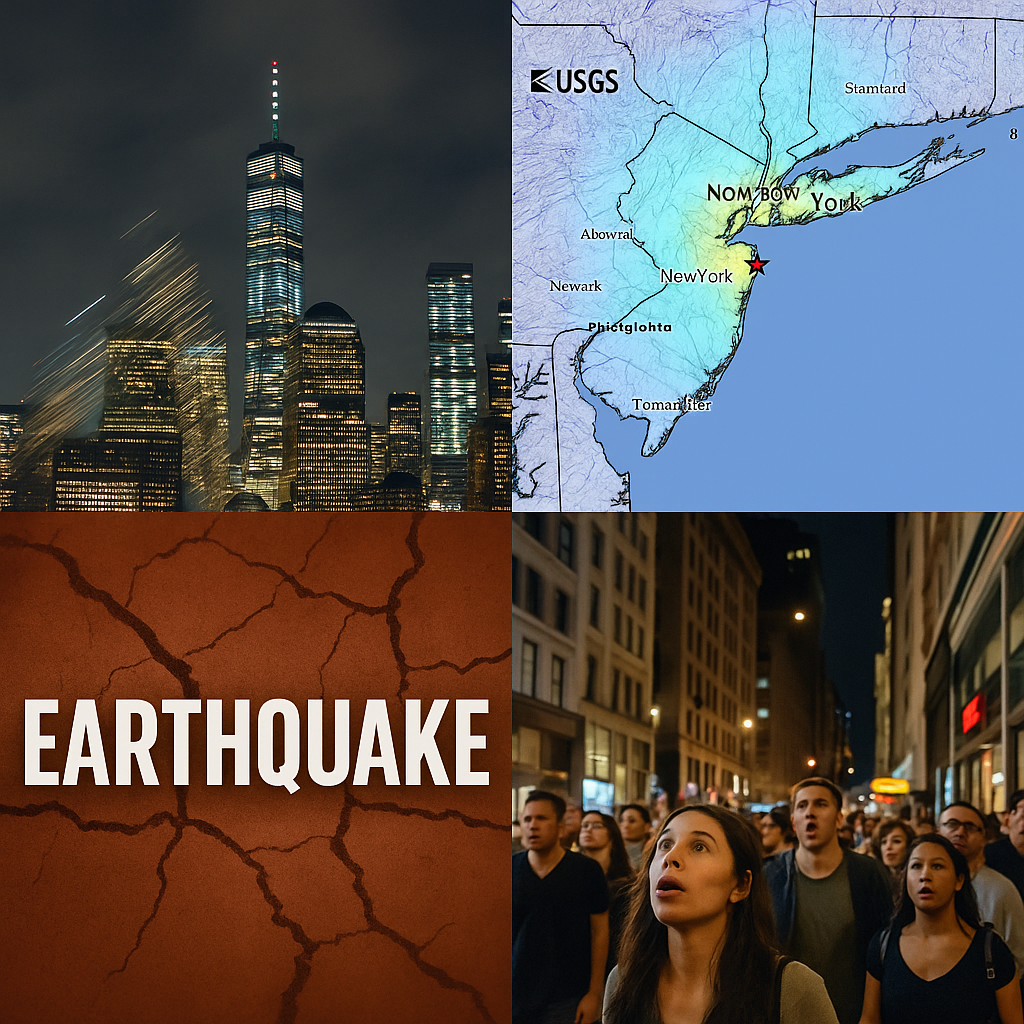Magnitude 3.0 Earthquake in NJ Sends Tremors Through New York City

Magnitude 3.0 Earthquake in New Jersey Sends Tremors Through New York City
A surprise tremor late Saturday in early August rattled parts of New York City—brief, unexpected, and a reminder that even the East Coast can shake.
What Recently Happened?
On the evening of **August 2, 2025**, at around **10:18 PM EDT**, a **magnitude 3.0 earthquake** struck near **Hasbrouck Heights, New Jersey**, roughly 8 miles west of Central Park. The U.S. Geological Survey reported the quake’s depth at about **6 miles (10 km)** under the surface
Though mild, the temblor was distinctly felt in parts of Manhattan, Staten Island, The Bronx, and throughout northern New Jersey. Residents described it as a sudden bang followed by a brief sway lasting a few seconds .
How It Felt Across the City
Witnesses reported windows trembling, cups rattling, and phones buzzing from emergency alerts. One Brooklyn resident noted just a fleeting sway—nothing alarming. Even the Empire State Building joked on X: “I AM FINE.”
Despite how noticeable it felt, **no injuries or structural damage** have been reported. Local authorities confirmed there were no disruptions to transit, services, or property safety .
Quick vs. Past Activity
While magnitude 3 quakes are considered minor—typically below the threshold to cause harm—it’s rare for this region. Most seismic activity here registers between **2 and 3.5**, and occurs several times a year
By contrast, the **April 5, 2024**, tremor near Tewksbury, New Jersey measured **4.8** and was the largest in the area in over a century. It was felt by an estimated **42 million people**, caused minor damage to around **150 buildings**, and briefly closed the Holland Tunnel for inspections :contentReference[oaicite:7]{index=7}.
Why It Matters
New York and northern New Jersey sit over ancient fault lines, including the **Ramapo Fault** and the **Dyckman Street Fault**. These older faults, reactivated by regional tectonic pressure, are capable of occasional shaking—though high‑magnitude events remain rare .
Recent research from Columbia University uncovered a previously unmapped fault that helped amplify the 2024 quake’s impact on NYC. That fault’s unusual angle apparently redirected seismic waves more strongly toward the city rather than the epicenter, raising concerns about future risk in the region
What Residents Are Saying
- A Staten Island resident described the noise as a “boom” followed by a shake so sudden it felt like a crash in the next room.
- Another in Nutley, NJ said the quake “lasted about two seconds”—sharp but short-lived :contentReference[oaicite:10]{index=10}.
- On social media, many tweeted about the late-night surprise: “Was that an earthquake or just my imagination?”
What Comes Next?
Officials say no immediate action is required. Aftershocks are possible but unlikely after a quake this magnitude. Emergency Management continues monitoring reports and coordinating with inspectors, just in case .
Environmental researchers and city planners are quietly reviewing building codes and assessing whether older structures need earthquake-safe upgrades—especially after the unexpected intensity reported in 2024.
Takeaway
This small tremor isn’t cause for alarm—but it’s a reminder: **earthquakes, though rare, can happen here**. And when they do, they echo curiosity, concern, and a shared sense of awe across a city built for stability.
New York City may rest on ancient bedrock—but even old systems can stir.